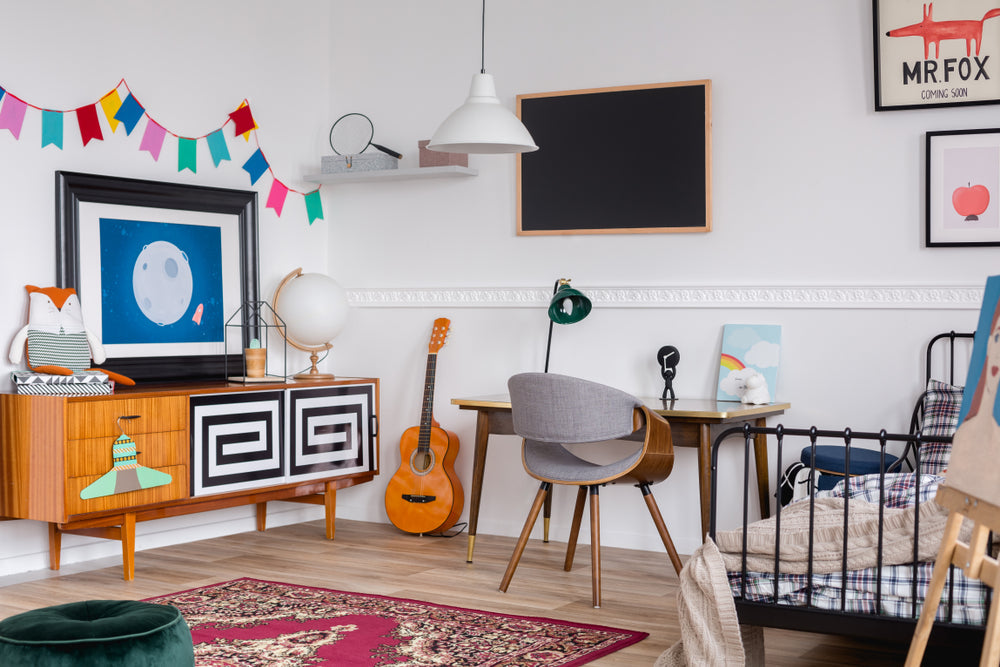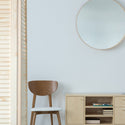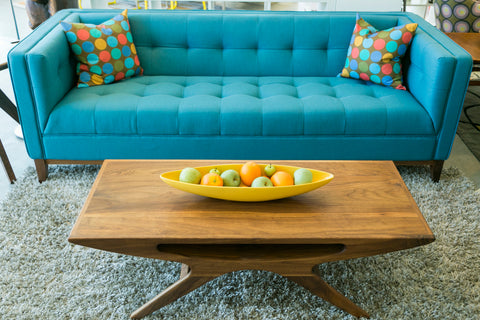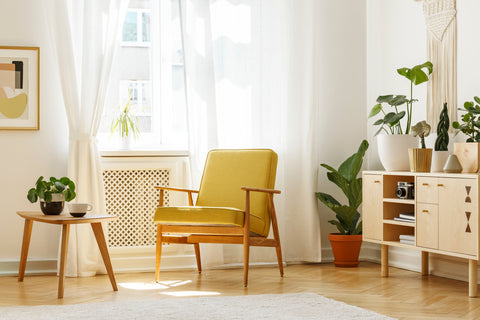What Makes Mid-Century Modern Collector’s Items So Valuable

With its everlasting appeal and iconic reputation, mid-century modern furniture has captured the hearts of both collectors and design lovers. The minimalist attitude, natural contours, and clean lines of mid-century design have made it a defining aesthetic of the 20th century. Beyond its aesthetic appeal, mid-century furniture is highly sought after, yet many of these sought-after pieces come with large price tags, which begs the question: why?
Hence the team from Mostly Danish would like you to know what makes our mid-century collector’s items so valuable.
Mid-Century Modern Explained
Although the word “Mid-Century Modern” wasn’t used until the mid-’80s, the furniture that falls under that category is designed with a combination of eras in mind.
Mid-Century Modern furniture combines post-World War II practicality, ‘50s era hope, ‘60s era earthiness, and the ‘70s era textures and tones.
This style of furniture emerged as a reaction to the indulgence of luxury and gold-adorned furniture that was popular in the ’40s.

Mid-Century furniture was designed with a “form follows function” state of mind. The designers of such a style of furniture were dedicated to providing comfort and practicality in their designs.
Even though decades have passed since the ’80s, homeowners today continue to be attracted to mid-century modern furniture’s timeless quality and style.
Determining Value Factors of Mid-Century Wares
Mid-century modern collectibles are highly prized for numerous reasons:
Design Aesthetics
The mid-20th century saw the emergence of mid-century modern design, which is defined by simple shapes, clear lines, and a minimalist aesthetic. This era's furniture, artwork, and other wares have a classic charm and a distinctive style that appeal to collectors and aficionados. Mid-century contemporary furniture is eye-catching and desired due to its unique design and practicality.
Historical Significance
The cultural and socioeconomic transformations of the post-World War II era are reflected in mid-century modern objects. They symbolize a change in design thinking, embracing new materials and production methods, and capturing the optimism and advancement of the time. People can connect with a particular time in history and appreciate the artistic and cultural significance these objects represent by collecting them.
Influence on Contemporary Design
Contemporary aesthetics have been significantly influenced by mid-century modern design. Its influence can be observed in fashion, furniture, architecture, and other design fields. These vintage objects are still in demand and relevant because so many current designers today are inspired by mid-century modern ideals.
Uniqueness and Limited Supply
Limited editions of some mid-century modern products were made, especially those made by notable designers or manufacturers. The rarity of some items raises their value and collectors' desire for them. Furthermore, as time goes on, the supply of authentic, well-preserved mid-century modern goods decreases, thus increasing their value.
Designer Brands
Items from the mid-century modern era frequently feature the names of renowned designers and architects who made significant contributions to the movement. Designers with stellar reputations and sought-after works include Charles and Ray Eames, Eero Saarinen, Hans Wegner, and Arne Jacobsen. The reputation and value of the things they produced are increased by the association with these great figures.
High Standards Of Craftsmanship
Products from the mid-century modern era are renowned for their fine craftsmanship and attention to detail. Many of these goods are long-lasting and durable since they were made with high-quality materials and conventional procedures. The fact that these items continue to function and look good decades after they were created adds to their worth.
Market Trends and Demand
Mid-century modern architecture has experienced a resurgence in popularity during the past ten years. The market demand for these products is rising as a result of factors including the recognition of programs like "Mad Men" and more media exposure. Prices have increased as more people look to add mid-century modern objects to their collections or homes.
What to Look For When Shopping for Mid-Century Collectors Items?
There are various important variables to take into account when buying mid-century collectors' items. Here are some critical indicators to watch out for:

1. Authenticity
Make sure the object is a genuine mid-century piece rather than a copy or a modern creation inspired by the design. Look for the designer's or the manufacturer's original markings, labels, or signatures. To learn about the particular product or designer's typical aesthetic and traits, do some research on them.
2. Condition
Examine the item's condition. Look for any indications of deterioration, wear, or repair. With vintage items, some minor wear is to be expected, but major damage or shoddy repairs can greatly reduce value and popularity. Analyze the moving parts, coatings, upholstery, and structural soundness. Remember that if the damage can be fixed, some objects can be eligible for restoration.
3. Provenance
Verify the item's provenance and history if they are both documented. Items with documented histories or those connected to well-known or powerful people may be worth more. Keep an eye out for any paperwork, receipts, pictures, or other proof that can verify the item's history and place of origin.
4. Designer or Manufacturer
Do some research on the product's maker or designer. In the mid-century modern market, some names are more prestigious and sought-after. Look for legendary creators like Arne Jacobsen, Hans Wegner, Charles and Ray Eames, Eero Saarinen, or Herman Miller, as well as enduring manufacturers like Knoll or Herman Miller. Learn their signatures, techniques, and the particular items they are known for.
5. Rarity
Take into account how rare the item is. Some objects from the middle of the 20th century were made in small numbers or just briefly. Search the market for less prevalent or distinctive designs that are not as easily accessible. An item's worth and collectability may increase due to its rarity.
Why Mid-Century Furniture is Priced the Way it is?

You may have walked into a furniture store and looked at its mid-century modern pieces, only to be baffled at the hefty price tag that comes with it.
But why is Mid-Century Modern furniture so expensive? Surely there must be a reason behind it.
The main reason behind having such a big price tag is the quality of materials and their ergonomics. Danish and Scandinavian pieces that have been produced in the ’50s and ’60s were made in high-end factories such as Carl Hanson & Son and Slagelse Mobelfabrik.

These items were made by artisans who had over 20 years of experience in creating high-quality and long-lasting furniture. Most of their original pieces are still in great condition after being used daily for over 40 years, and can still last another 40.
While authentic mid-century modern furniture is on the more pricey side, it lasts much longer than the furniture we buy from other retail stores.
Another factor that determines the price is the retained value of the furniture. As the demand for good quality vintage furniture rises, so does their price. Because they’re limited in quantity, people are willing to pay a big sum of money for an original piece.
Mid-Century Modern Furniture in Canada: A Worthy Investment
Locating original Mid-Century Modern furniture in Canada can be a difficult and risky task, so why not hand the responsibility over to the MCM furniture experts.
At Mostly Danish, we take great pride in having the greatest Mid-Century Modern furniture inventory in Canada.
You can artfully blend together contemporary furniture with our iconic Danish pieces, which are sure to give your home a unique, timeless and special look.
Contact us today and take your home to the next level.






